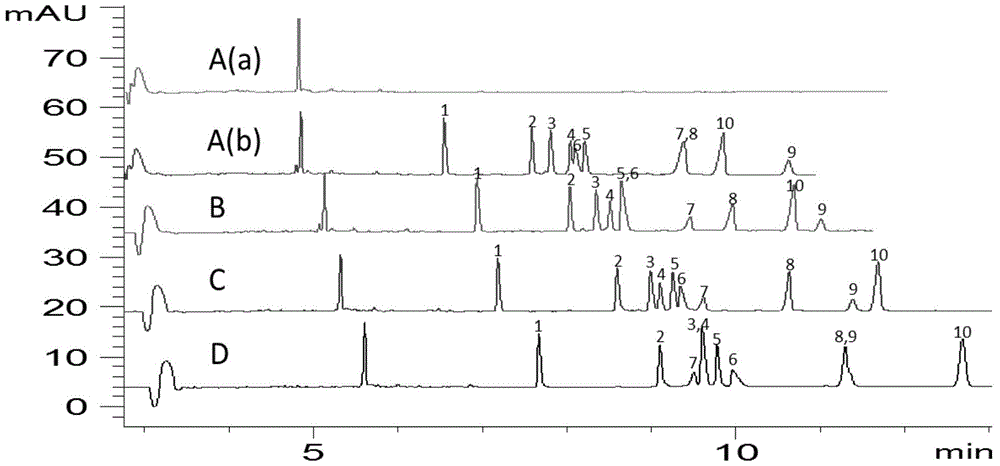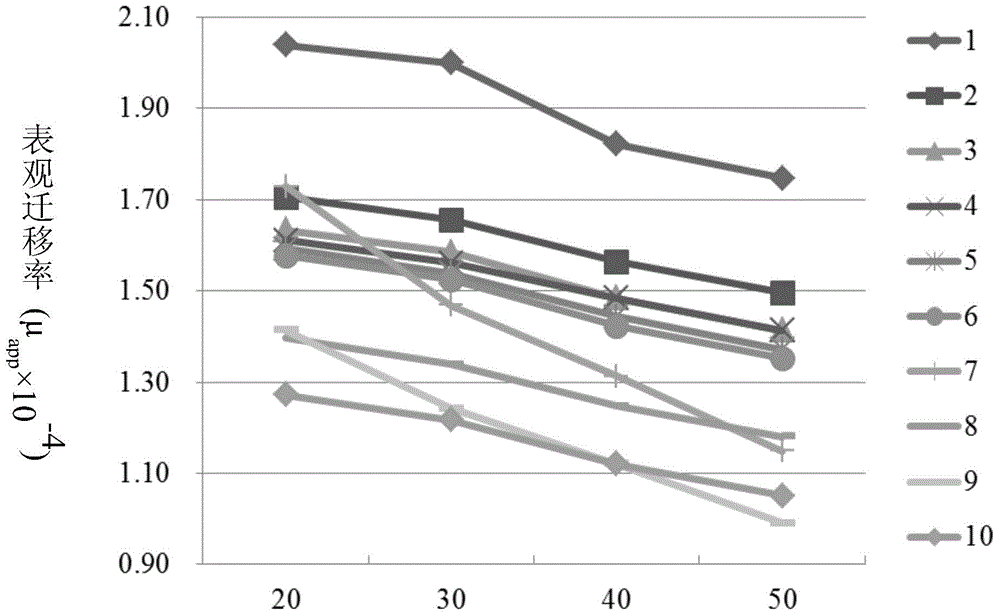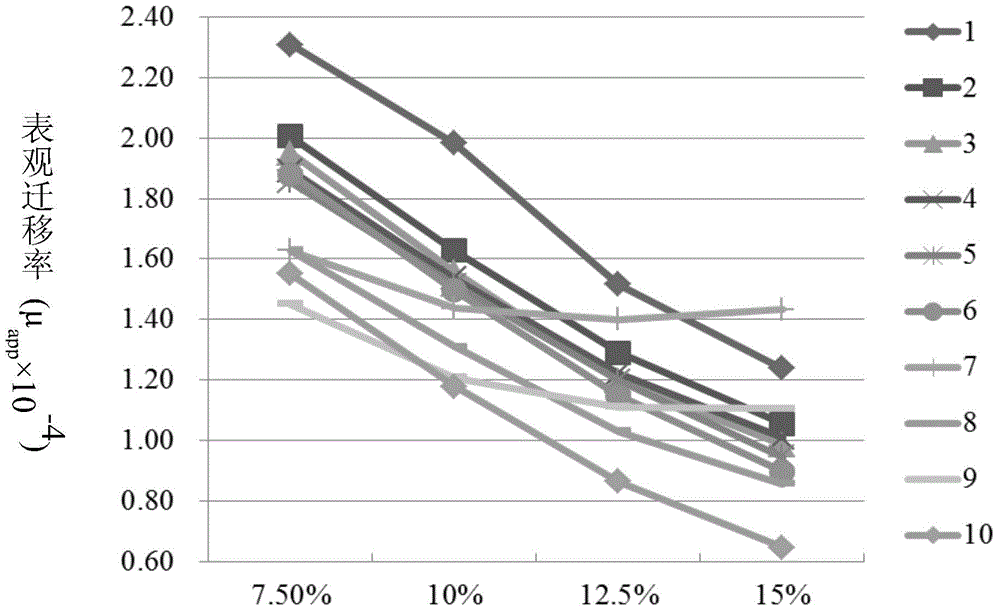Method for detecting phenolic acid and/or tanshinone ingredient by capillary electrophoresis
A technology of capillary electrophoresis and tanshinone, which is applied in the field of analysis and detection, can solve the problems of single stationary phase, large consumption of mobile phase, and high cost of the detection method, and achieve the effect of remarkable experimental detection effect, good stability, and simple steps
- Summary
- Abstract
- Description
- Claims
- Application Information
AI Technical Summary
Problems solved by technology
Method used
Image
Examples
preparation example Construction
[0047] The preparation method of the Danshen reference substance solution related to the present invention refers to the 2010 edition of the Pharmacopoeia. The specific steps are: respectively take vanillic acid, rosmarinic acid, danshensu sodium, salvianolic acid A, salvianolic acid C, caffeic acid, and salvianolic acid The reference substance of acid B, protocatechuic acid, dihydrotanshinone and tanshinone IIA is appropriate, accurately weighed, mixed and placed in a volumetric flask, and methanol is added to make each lml containing vanillic acid, rosmarinic acid, danshensu sodium, salvianol A solution of acid A, salvianolic acid C, caffeic acid, salvianolic acid B, protocatechuic acid, and 250 μg each of dihydrotanshinone and tanshinone IIA to obtain the reference solution.
[0048] Precisely measure 200μL of the reference solution into a 1.5mL centrifuge tube, add 100μL of blank urine extract and 200μL of blank buffer solution, vortex for 3 seconds, filter, and take the addit...
Embodiment 1
[0050] Example 1. Investigation on the concentration of graphitized multi-walled carbon nanotubes
[0051] 1.1 Take 4 clean 30ml wide-mouth bottles, numbered 1, 2, 3, and 4. Among them, add 6.5mL water to bottle 1; add 0.75mL40μg / mL graphitized multi-walled carbon nanotube dispersion and 5.75 to bottle 2 mL water; add 1.5mL40μg / mL graphitized multi-walled carbon nanotube dispersion and 5mL water to bottle 3; add 2.25mL40μg / mL graphitized multi-walled carbon nanotube dispersion and 4.25mL water to bottle 4, respectively Add 86.5 mg of SDS, 2.5 mL of 40 mmol / L borax and 1 mL of isopropanol to the four bottles, sonicate for 10 minutes, and prepare a buffer solution.
[0052] 1.2 Take 4 organic membrane filters of 0.22μm size, corresponding to No. 1-4 syringe numbers 1, 2, 3, 4, and filter the buffer solution in the syringe with the filter according to the corresponding number, a buffer solution Corresponding to two injection bottles, a total of 8 injection bottles are loaded.
[0053]...
Embodiment 2
[0058] Example 2. Investigation of SDS concentration
[0059] 2.1 Take 4 clean 30ml jars, numbered 1, 2, 3, 4, of which 57.5mg SDS is added to bottle 1; 86.5mg SDS is added to bottle 2; 115.4mg SDS is added to bottle 3; Add 144.2mg SDS to the bottle, and then add 1.5mL40μg / mL graphitized multi-walled carbon nanotube dispersion, 5mL water, 2.5mL40mmol / L borax and 1mL isopropanol to the four bottles respectively, and ultrasound for 10 minutes to prepare buffer Solution.
[0060] 2.2 Take four 0.22μm organic membrane filters, corresponding to the number 1-4 syringe number 1, 2, 3, 4, and according to the corresponding number, use the filter to filter the buffer solution in the syringe, a buffer solution Corresponding to two injection bottles, a total of 8 injection bottles are loaded.
[0061] Fill the capillary column with a buffer solution, and take a blank urine sample plus a reference substance for capillary electrophoresis detection.
[0062] The experimental results are as follow...
PUM
| Property | Measurement | Unit |
|---|---|---|
| Concentration | aaaaa | aaaaa |
| Concentration | aaaaa | aaaaa |
| Mobility | aaaaa | aaaaa |
Abstract
Description
Claims
Application Information
 Login to View More
Login to View More - R&D
- Intellectual Property
- Life Sciences
- Materials
- Tech Scout
- Unparalleled Data Quality
- Higher Quality Content
- 60% Fewer Hallucinations
Browse by: Latest US Patents, China's latest patents, Technical Efficacy Thesaurus, Application Domain, Technology Topic, Popular Technical Reports.
© 2025 PatSnap. All rights reserved.Legal|Privacy policy|Modern Slavery Act Transparency Statement|Sitemap|About US| Contact US: help@patsnap.com



